By Terry Sovil from the December 2011 Edition
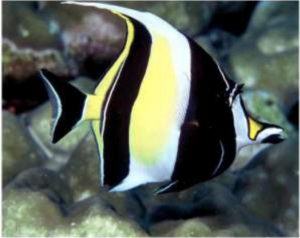 Moorish Idol
Moorish Idol
A rival for one of the title “Most beautiful fish in the Manzanillo area” is the Moorish Idol from the family of the same name. Moorish Idols range in depth from 10-150′. They are common in the southwestern Sea of Cortez and Mainland Pacific to Panama. They like rocky boulder-strewn areas and walls. They are either solitary or move in pairs but sometimes form large schools. They ignore divers but swim quickly and will move away when approached. The best bet is to wait quietly in a concealed position near their course of travel or approach very slowly. You may recognize Moorish Idols from the movie Finding Nemo played by the character ‘Gill’.
Moorish Idols have a very distinctive shape and their coloring makes them easy to spot. They have a large dorsal fin that ends in a thread-like tip, a long snout and three bold black bands over their eye, rear body and on their tail. They grow from 4-6″ with a maximum of 9″.
Pacific Highhat
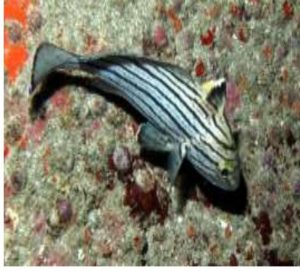 The Pacific Highhat has narrow dark borders on their dorsal, anal and tail fins. During their intermediate stage they have three wide black stripes that go right down and onto their tail. They are similar to the Rock Croaker except for this center stripe. Juveniles have a black bar that extends from their first dorsal fin across their body and onto their ventral fin.
The Pacific Highhat has narrow dark borders on their dorsal, anal and tail fins. During their intermediate stage they have three wide black stripes that go right down and onto their tail. They are similar to the Rock Croaker except for this center stripe. Juveniles have a black bar that extends from their first dorsal fin across their body and onto their ventral fin.
Pacific Highhat’s are in the family of Drums & Croakers. They live in depths from 10’ to 100’. Adults have a dark brown and coppery sheen; similar to a Rock Croaker with dark charcoal with a purplish sheen. Intermediate fish have white with narrow black strips. Juveniles have a translucent to yellow with black strip through eye to tail. They form small groups or are solitary inhabiting rocky and coral reefs, lurking in the shadows of recesses, caves and under ledges. They are wary of divers but can be approached in a slow, non-threatening manner. They range in size from 4 to 8″ with a maximum of 11″. Their family is Angelfishes and their transition from juvenile to adult is equally as colorful and beautiful. They have a distinct white bar behind their pectoral fin, a yellow tail and bright blue bands with a dark blue body with yellow to orange markings on dorsal and anal fins. There is a “crown” of light blue spots on their forehead whilst the juvenile has yellow to orange head and fins with wide dark eye bar and a dark body with bright blue bands. They grow from 6-12” with a maximum of 15”.
Pacific Leopard Flounder
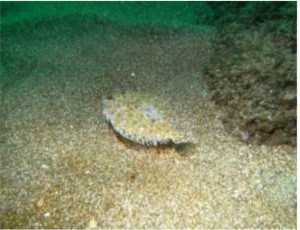 The Pacific Leopard Flounder is a flatfish lying on its right side. The distance between their eyes is equal to the diameter of the eye. Sporting shades of brown with white to bluish and ring markings these fish can pale or darken rapidly to match the bottom. They can be found on the East Pacific Coast from Baja to Panama and as far as Peru. Usually solitary, they inhabit sandy bottoms and rocky, boulder and gravel-strewn slopes. When swimming they move with a wave-like motion.
The Pacific Leopard Flounder is a flatfish lying on its right side. The distance between their eyes is equal to the diameter of the eye. Sporting shades of brown with white to bluish and ring markings these fish can pale or darken rapidly to match the bottom. They can be found on the East Pacific Coast from Baja to Panama and as far as Peru. Usually solitary, they inhabit sandy bottoms and rocky, boulder and gravel-strewn slopes. When swimming they move with a wave-like motion.
Pacific Leopard Flounders are from the family of Flatfish. They have shades of brown with white to bluish spots and ring markings.
Pacific Mutton Hamlet
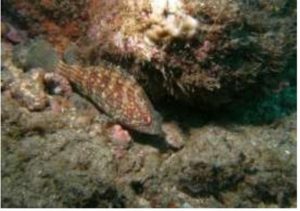 The Pacific Mutton Hamlet ranges in depths from 15-100′. They can be seen from the Sea of Cortez to Panama. They are solitary fish and inhabit reefs and rocky, boulder-strewn slopes where they rest on the bottom, often in the shade.
The Pacific Mutton Hamlet ranges in depths from 15-100′. They can be seen from the Sea of Cortez to Panama. They are solitary fish and inhabit reefs and rocky, boulder-strewn slopes where they rest on the bottom, often in the shade.
This is a colorful spotted fish that goes from a juvenile phase to adult going through a reddish phase which can make them look like a different type of fish altogether. They have numerous small, whitish blotches and spots with a bright red iris, a dark pupil that is often green. The juvenile has white spots over their head, body and fins except pectoral and ventral. In the reddish phase they are a mottled reddish brown with black specks. During the reddish phase they appear yellow at depth (light is absorbed with reds disappearing first) but are a mottled red. These fish grow from 4-7″ with a maximum of 10″.
Download the full edition or view it online
—
Terry is a founding partner and scuba instructor for Aquatic Sports and Adventures (Deportes y Aventuras Acuáticas) in Manzanillo. A PADI (Professional Association of Dive Instructors) Master Instructor in his 36th year as a PADI Professional. He also holds 15 Specialty Instructor Course ratings. Terry held a US Coast Guard 50-Ton Masters (Captain’s) License. In his past corporate life, he worked in computers from 1973 to 2005 from a computer operator to a project manager for companies including GE Capital Fleet Services and Target. From 2005 to 2008, he developed and oversaw delivery of training to Target’s Loss Prevention (Asset Protection) employees on the West Coast, USA. He led a network of 80+ instructors, evaluated training, performed needs assessments and gathered feedback on the delivery of training, conducted training in Crisis Leadership and Non-Violent Crisis Intervention to Target executives. Independently, he has taught hundreds of hours of skills-based training in American Red Cross CPR, First Aid, SCUBA and sailing and managed a staff of Project Managers at LogicBay in the production of multi-media training and web sites in a fast-paced environment of artists, instructional designers, writers and developers, creating a variety of interactive training and support products for Fortune 1000 companies.
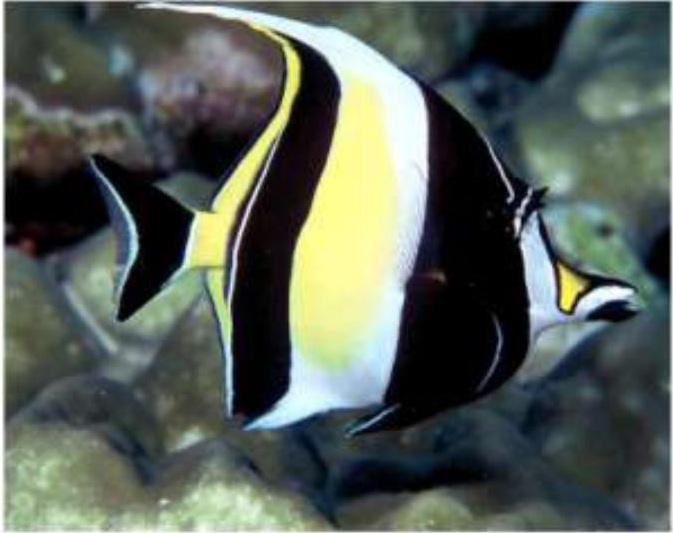


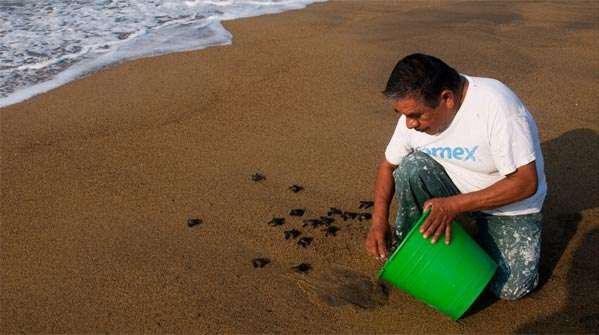

You must be logged in to post a comment.